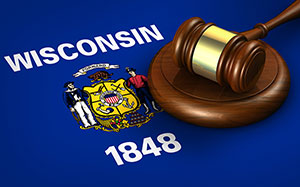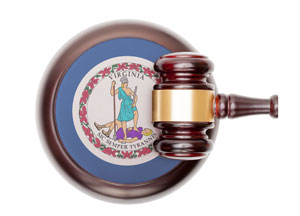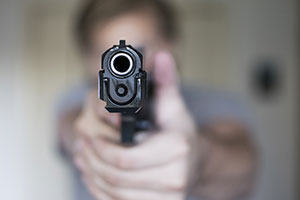Malik Farrad was convicted of a felony and thus was subject to a federal law that prohibits individuals with felony convictions from possessing firearms or ammunition. After Farrad served his sentence, the police in Johnson City, Tennessee received reports that Farrad had been seen in possession of guns.
To further the investigation of those rumors, a Johnson City police officer sent Farrad a “friend” request on Facebook. Farrad accepted the request, giving the officer the opportunity to view the postings that Farrad made available to Facebook friends. The officer saw a photograph that appeared to show three handguns “sitting on a closed toilet lid in a bathroom.”
On the strength of that photograph, the police applied for and received a warrant that directed Facebook to release all information associated with Farrad’s Facebook page. Facebook released additional photographs to the police, including some pictures showing “a person who looks like Farrad holding what appears to be a gun.” Farrad’s identification was assisted by tattoos that are visible in the pictures.
Farrad’s Trial
Farrad was arrested for being a felon in possession of firearms. No witness who testified in his trial actually saw Farrad with a gun. The police produced no gun at the trial. The prosecution’s evidence consisted largely of the photographs and the inferences that the photographs were taken after Farrad was convicted as a felon, that Farrad is the person in the photographs, and that the gun he is holding in the picture is real.
Testimony during the trial revealed that Facebook strips metadata from posted photographs, making it impossible to access that data to determine the date and time that a photograph was taken. However, a police officer testified that the background of the photographs matched an apartment that Farrad occupied, and the property manager testified that Farrad began his occupancy in February 2013, after he was convicted of a felony.
Farrad objected to admission of the photographs as hearsay. The prosecution countered that they were admissible as business records maintained by Facebook. Farrad then objected that Facebook could not authenticate the photographs because Facebook did not know who took the photographs or when or where they were taken. The trial court overruled that objection and admitted the photographs into evidence.
Expert Testimony
Officer Hinkle, who worked as the police department’s armorer, testified as a weapons identification expert. He testified that the gun shown in the photographs was a Springfield XD .45 caliber handgun. The officer expressed the opinion that the gun was real based on markings and other details that were consistent with a real gun. Hinkle searched the marketplace for a replica of a Springfield XD .45 but could not find one.
To supplement evidence that seems a bit weak on its face, the prosecutor used the presumed social media expertise of Officer Garrison, the police officer who “friended” Farrad. Garrison was asked to testify “in his capacity as an experienced user of social media in the service of police investigations.” In that capacity, and based on his “training and experience,” Garrison testified that criminals usually upload photographs to their social media accounts soon after the criminal conduct occurs (“Generally, in my experience, it’s been more of a — you know, like I say, it can be instantaneous. But it is more of a present-type of thing.”).
When asked why criminals post evidence of crimes to social media, Garrison testified that criminals “like to brag about their — their activities, they’re proud of it, and just like anyone, they want to let their friends know what they’re doing, let their friends know, you know, where they’re at, what’s going on.”
Garrison then testified that, in his experience, the camera app on a cellphone makes it more likely for someone who takes a picture on a cellphone to upload the picture immediately to social media. He thought it would be “rare” for a criminal to wait a substantial period of time before posting evidence of a crime to a social media site.
When asked to identify the criminals who, in his experience, admitted to taking pictures of criminal activity and posting those pictures to a social media site, Garrison testified that he couldn’t think of a “specific instance.” Nor could he identify any specific training that informed his opinion. None of that dissuaded the judge from admitting the testimony based on the officer’s supposed training and experience.
Postconviction Motion
The jury found Farrad guilty and the judge sentenced him to more than 15 years in prison. Farrad later filed a motion for a new trial based on his discovery of website pages showing that Ring Manufacturing sells a replica of a Springfield XD .45. Farrad alleged that the prosecution’s expert testified falsely that no fake versions of the weapon are available in the marketplace.
The judge denied the motion, determining that Farrad presented no evidence that its expert officer deliberately lied. The judge may have believed that the officer conducted a search of the marketplace but that the search was less than thorough, making the expert incompetent but not dishonest.
More importantly, the judge concluded that evidence of the replica firearm would have made no difference because the replica shown on the web pages is bright blue to prevent it from being mistaken for an actual weapon. The replica therefore could not be the weapon shown in the photographs that appeared on Farrad’s Facebook page.
Appellate Opinion
The appellate court easily found that Officer Hinkle’s expert testimony was admissible. Hinkle’s training and experience qualified him as a firearms expert. He had a reasonable basis for identifying the gun in the Facebook photographs and for rendering the opinion that the gun was real.
The court came to the opposite conclusion with regard to Officer Garrison. The court concluded that Garrison testified as an expert, given that he was asked to express opinions based on his training and experience.
Moreover, the prosecution presented him to the jury as an expert in a “niche area of social-media activity: how criminals behave on social media.” Since the prosecution presented that body of knowledge as falling “beyond the ken of an average juror,” Garrison’s testimony was subject to the admissibility rules that apply to expert witnesses.
The appellate court decided that Garrison was unqualified to render the opinions he offered and that the opinions were not reliable. To be qualified to opine about the social media habits of criminals, Garrison needed to have special knowledge of the topic.
While the government made a show of Garrison’s training and experience as a police officer who was familiar with Facebook, Garrison admitted that he had never talked to a criminal about Facebook usage. Nor could he recall any training relevant to the use of Facebook by criminals, although he claimed to have chatted with other officers about the topic.
Garrison’s opinions were unreliable because they were not based on adequate data. He could not offer even anecdotal support for his opinions. Nor were his opinions based on a methodology, much less one that was reliable. The court concluded that the common perception of police officers as experts on crime must give way to the demand that expertise be demonstrated, not assumed. In any event, there is no reason to believe that police officers who have not formally studied the subject are experts in the social media habits of criminals.
Conviction Affirmed
The court concluded that Garrison’s testimony should not have been admitted. In the end, however, the court decided that his testimony wasn’t important to the conviction.
Garrison’s testimony was presented to prove that the photograph was uploaded soon after it was taken, but Farrad’s lawyer did not argue that the photograph was taken before Farrad was convicted. That might have been an error on the lawyer’s part, but that is not the kind of error that can be raised in a direct appeal in federal court. Farrad’s conviction was therefore affirmed despite the trial court’s error in treating a police officer as an expert witness regarding the Facebook habits of criminals.














